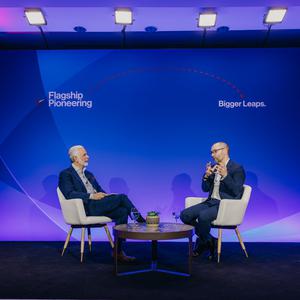Cystic fibrosis (CF) is a progressive genetic disease that affects the lungs and other organs, limiting a person’s ability to breathe, making them more prone to infections, impairing their ability to absorb nutrients, and causing other complications. Most people living with CF have a mutation in the cystic fibrosis transmembrane conductance regulator (CFTR) gene that results in a dysfunctional CFTR protein. The functional protein acts as an ion channel, helping to maintain the balance of salt and water on surfaces throughout the body, and dysfunction of this channel leads to buildup of thick mucus.
As recently as the late ‘90s, the median life expectancy for a CF patient was tragically only 32 years of age. CFTR modulator therapies launched since then (e.g., Trikafta) have dramatically improved survival and quality of life for CF patients, but they do not represent a true cure for the disease. Furthermore, about 10% of people living with CF are not eligible for these medications and have no effective treatment options.
Genetic medicine has the potential to deliver a curative therapy for CF patients regardless of their genetic mutation. However, while early gene therapy and gene editing technologies have shown great promise, they have limitations that hinder their application in CF.
Gene editing or nucleotide base pair editing approaches, for example, are able to knock genes out, or make a subset of single-base pair substitutions in which one nucleotide is replaced with a different nucleotide. They are not able to precisely and scarlessly insert the three base pairs that are missing to fix the most common CFTR mutation (i.e., delta F508).
Gene therapies, such as adeno-associated virus (AAV) therapy, can deliver an entire gene sequence to a cell, but are diluted over time through cell division and often trigger an immune response leading to side effects and preventing redosing.
To overcome these limitations, Flagship Pioneering-founded Tessera Therapeutics is pioneering a new area of genetic medicine that harnesses nature’s greatest genomic architects: mobile genetic elements (MGEs). In contrast to CRISPR, which evolved to destroy DNA, MGEs evolved to write DNA, using RNA and DNA intermediates to move or copy their own DNA into a new location.







